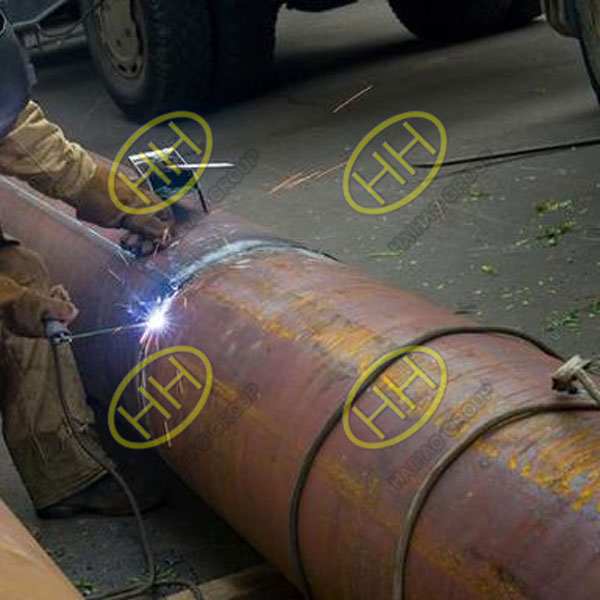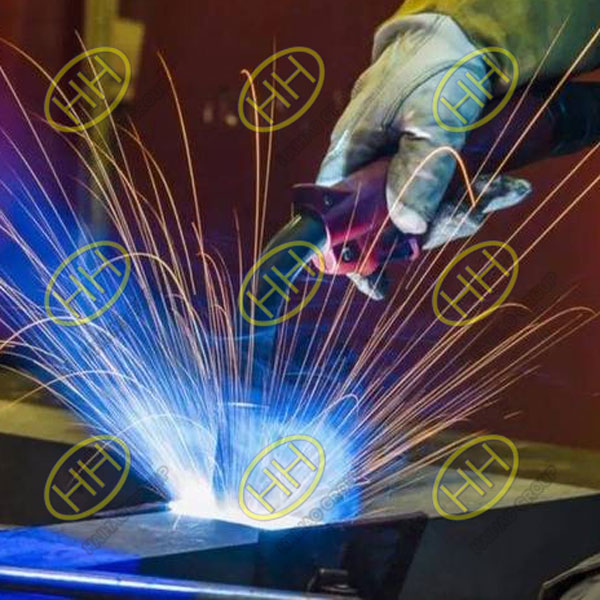What are the special process measures for welding medium carbon steel?
Since medium carbon steel is prone to cold cracks, hot cracks and other defects during welding, some special process measures need to be taken during welding to ensure normal welding.
1.Welding method
Various arc welding methods can be used to weld medium carbon steel. Since medium carbon steel is mostly used to manufacture machine parts, not large-scale welding structures, arc welding with electrodes is the most widely used method in production.
2.Welding materials
In order to prevent cold cracks and hot cracks in welded joints, low-hydrogen electrodes are usually used for arc welding. Low-hydrogen electrodes not only reduce the hydrogen content in the weld, but also have certain desulfurization and phosphorus effects, which can improve the plasticity and toughness of the weld.
When the carbon content in the steel is low and the joint constraint is not large, ilmenite or calcium-titanium electrodes can also be used for welding, but strict process measures must be taken to cooperate, such as minimizing the fusion ratio, strictly preheating the weldment and controlling the interlayer temperature. If the weldment cannot be preheated, chromium-nickel austenitic stainless steel electrodes can also be used for welding.
3.Preheating temperature and interlayer temperature
Preheating before welding is the most effective process measure to prevent cracks when welding medium carbon steel. Preheating can not only reduce the cooling rate of the joint, thereby preventing the formation of martensite, but also reduce welding stress and accelerate the diffusion and escape of hydrogen.
In most cases, preheating and maintaining the interlayer temperature are required. The selection of preheating temperature and interlayer temperature depends on the carbon equivalent of the steel, the thickness of the parent material, the rigidity of the structure, the type of welding rod, etc.
The preheating temperature can be determined by weldability test, or by the empirical formula T0=550(C-0.12)+0.4δ, where T0 represents the preheating temperature (℃), C represents the mass fraction of carbon in the parent material to be welded (%), and δ represents the thickness of the steel plate (mm).
4.Groove type
It is best to open a U-shaped or V-shaped groove for the weldment, which can reduce the proportion of the parent metal melted into the weld. If the defect of the casting is welded, the groove shape dug out should be smooth to reduce the amount of parent metal melted into the weld.
5.Welding parameters
Welding should be done with a DC reverse polarity power supply. In multi-layer welding, since the proportion (mass fraction) of the parent material dissolved into the first layer of weld can reach up to about 30%, it is advisable to use a small diameter electrode, a small current, and a slow welding speed.
6.Post-weld heat treatment
After welding, it is best to immediately perform stress relief heat treatment on the weldment. Especially for thick weldments, large rigid structural parts, and weldments working under dynamic loads or impact loads.
The temperature for stress relief tempering is generally 600-650℃.
If stress relief heat treatment cannot be performed immediately after welding, post-heating should be performed, that is, heating slightly higher than the preheating temperature, and the holding time is about 1h per 10mm thickness.
The correct welding procedure, material selection, and thermal management are essential for the successful welding of medium carbon steel. By implementing these measures, the risk of cracking, pores, and welding defects can be significantly reduced.
Haihao Group is an industry expert in pipeline and steel solutions. If you need high-quality steel products or professional welding assistance, please feel free to contact us! Email:sales@haihaogroup.com
Related article:


